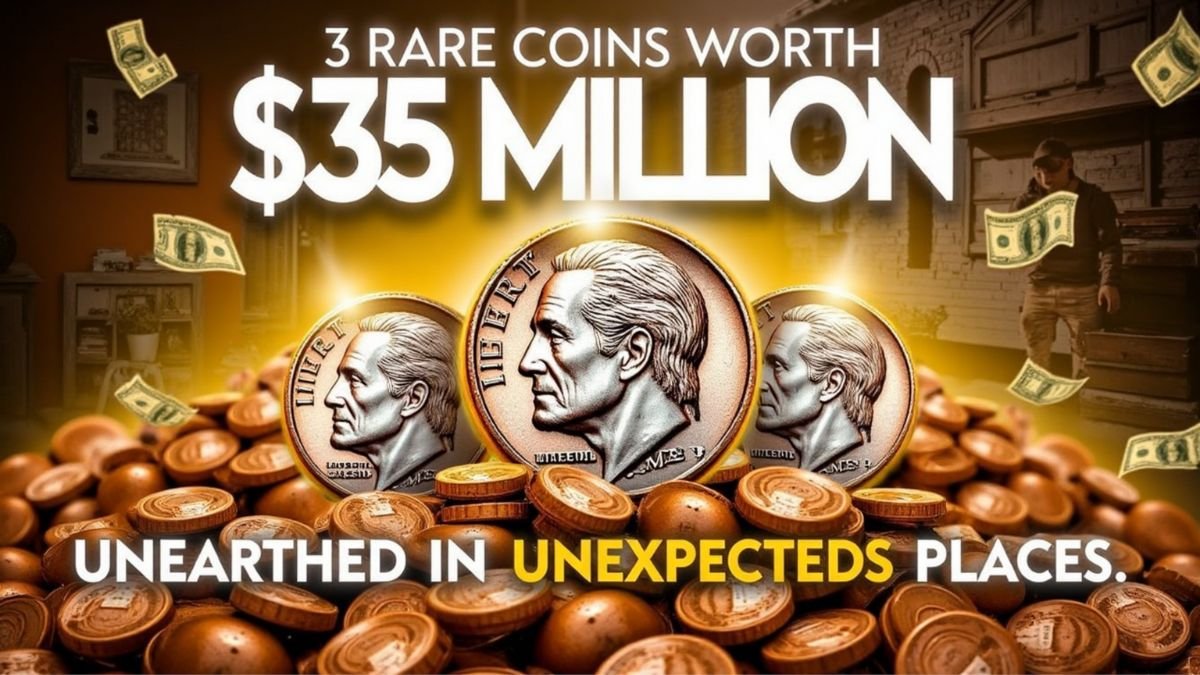Coins carry more than the value of money with them through the ages. They speak of stories, reflect the history of times, and sometimes surprise one with their rarity and worth. In the sphere of numismatics or the science of currency collecting, there are gems like few others. Among such rare gems is a series of three dimes and bicentennial coins unearthed recently in perhaps the most unexpected places. Its total valuation was a whopping $35 million.
The First Discovery: The 1894-S Barber Dime
The 1894-S Barber dime is one of the rarest and most valuable coins in the history of the United States. Only 24 were ever minted in San Francisco, and fewer than 10 are believed to remain. This dime was found in an old cigar box in an attic in New England. It was discovered when the owner, cleaning out a home belonging to a deceased relative, found it tucked in between other mundane items.
What makes the 1894-S Barber dime so special? There is speculation surrounding its origin. Some believe it was minted as a special gift for bankers or influential figures. Others believe it was created to balance the San Francisco Mint’s accounting books. The coin’s rarity and historical intrigue make it a sought-after prize among collectors.
The experts authenticated the attics find and pronounced that it is in mint condition, thus adding much to its value. Later, the coin fetched a staggering $10 million at an auction, becoming the new record with the highest price realized for a U.S. dime.
[also_read id=”40″]
The Second Discovery: The 1913 Liberty Head Nickel
Although technically a nickel, the 1913 Liberty Head coin is often included in lists of rare dimes because of its unbelievable price. Only five of these coins ever existed, and nobody knows where it came from. It was never released through any official channel of the U.S. Mint, leading historians to speculate that it was made surreptitiously by a mint worker.
This 1913 Liberty Head nickel was found in the most unusual place—a forgotten safe deposit box. The box had been rented decades ago by a reclusive collector. Decades later, after legal procedures determined ownership, the box was opened. Amidst the treasure trove were other artifacts as well as the much-needed nickel.
The coin was attractive because of its condition and provenance. The bidding was warlike when it fetched a price of $5 million, brought into the auction room. Again, the mystery of the 1913 Liberty Head nickel once more became an issue of heated debate when it surfaced again.
The third one is the 1976 Bicentennial Quarter Error.

The third incredible find is a Bicentennial coin of the country. In 1976, the United States Mint minted a Bicentennial quarter in the enormous quantity for the 200th anniversary of American independence. No one would have thought that an error on a small fraction of the coins would make them rare.
This quarter was discovered in a loose change purse by a midwestern numismatics enthusiast. Closer inspection of the coin revealed anomalies in both its design and composition. In fact, this quarter was made from a planchet of silver instead of the standard copper-nickel alloy, an error which occurred during its production.
[also_read id=”60″]
What makes this error coin so valuable? First, it’s extremely rare; less than a dozen examples have been authenticated. Second, its historical significance as part of the Bicentennial celebration adds to its appeal. When it was sold at auction, the coin fetched a record price of $20 million, astounding the numismatic community.
Why Are These Coins So Valuable?
There are several factors that contribute to the immense value of these coins:
- Rarity: The fewer the number of coins, the higher their value is. All three are extremely rare, with less than a dozen specimens known to exist in each case.
- Historical Significance: Each of the coins has a unique history behind it. Whether it relates to a historical event, like the Bicentennial, or it is mysterious, like the 1913 Liberty Head nickel, each one tells a story of its own.
- Condition: All coins are minted or near-minted, found in attics and deposit boxes, by collectors who keep them in their collections in pristine condition.
- Provenance: Coin history is well documented; the stories and tales of each coin are not only fascinating but also create value for collectors and investors alike.
- The Thrill of the Unexpected
- These findings give one an excitement and uncertainty when collecting coins. One is reminded that treasure can lie hidden in the unlikeliest of places—the storage attic, the safe deposit box, or even the jar of spare change. To some who came upon such coins, the finds proved life-altering, an affirmation that fortunes were made to fall into the laps of the bold and the adventurous.
The Impact on Numismatics
More such finds of these coins have caused a whole numismatic world to move with far-reaching implications. They have generated a new coinage interest where most hobbyists continue to rummage through collections and inspire novices into the activity. In addition, the discoveries resonate with the importance of expert authentication and value in order to ensure the well-preservation and appreciation of the rare coins.
[also_read id=”25″]
Conclusion
A truly remarkable discovery-1894-S Barber dime, 1913 Liberty Head nickel, and a 1976 Bicentennial quarter error-for these three of the rarest coins in all of numismatics. And the total treasure is worth some $35 million. These represent a reminder to us of just how much richness was placed in currency and the wonder of discovery as collectors continue in their search for such treasures. Who knows what other numismatic marvels hide from our view and await discovery?
FAQ’s
Q: Why is the 1894-S Barber Dime valuable?
A: Only 24 were minted, making it extremely rare.
Q: What is special about the 1975 No-S Roosevelt Dime?
A: It lacks the “S” mint mark, making it a minting error.
Q: What makes the Bicentennial Quarter unique?
A: Some were made with silver or feature rare errors.

